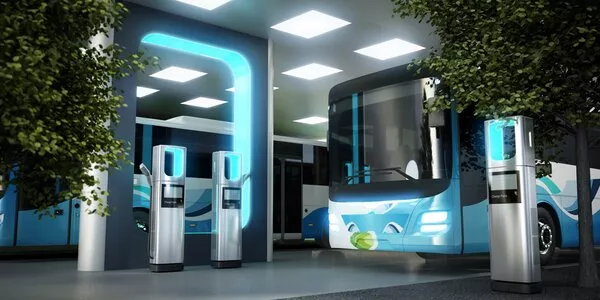
BESS – EMERGING ASSET TO ESSENTIAL INFRASTRUCTURE
The recent closing of the substantially merchant battery financing, Constantine, along with the Zenobe led-Eccles project have drawn attention to the development of the Battery Energy Storage Systems (BESS) asset class. These transactions highlight an increase in the number of financings in Europe, particularly in the UK.
By Nathalie Lemarcis, Managing Director, Energy Finance & Advisory and Michael De Witte, Director, Energy Finance & Advisory, Societe Generale Corporate & Investment Banking
With further transactions anticipated in the UK and in Europe, we take stock of trends in financing structures and bankability for BESS projects, drawing on insights from Societe Generale, who acted as Mandated Lead Arranger & Hedge Provider on both transactions.
The case for batteries
To drastically reduce carbon emissions, the UK government has adopted several ambitious targets. In line with the Paris Agreement, the government has committed to reducing greenhouse gas emissions by at least 68% by 2030 compared to 1990 levels. It is also legally committed to achieving net zero emissions by 2050, a pivotal milestone in the country’s transition to a low-carbon economy.
The scale of the challenge necessitates strong development in renewable power generation capacity, with the UK planning to increase solar power generation capacity to up to 70 GW by 2035 and offshore wind generation capacity by up to 50 GW by 2030. Renewables excluding hydropower already account for 52.9% of the UK electricity generation installed capacity in 2023.
In the near term, the UK is targeting the removal of unabated coal power generation from the UK’s energy market by 2024, with the goal of fully decarbonising the power system by 2035.
Given the intermittent nature of solar and wind generation, as well as the lack of investment in the grid, battery storage technologies are well positioned to fill the gap in the market left by the dispatchable energy generators, help stabilize the grid and contribute towards aligning better matching demand and supply.
National Grid ESO, as operator of the UK power grid, considers the UK will require 50 GW of energy storage capacity by 2050 to meet the country’s net zero target.
Consultants forecast between 15 GW and 20GW of battery energy storage capacity by 2035-2040 (up four times from 2023), highlighting the critical role batteries will play in decarbonizing the grid.
BESS is a proven, low-cost flexible technology that is likely to be more competitive and responsive versus other more expensive and emerging technologies, and it will play an essential role as the UK’s overall electricity demand increases.
In parallel to the increase in installed capacity, battery providers have also been working on longer duration batteries, moving away from the now outdated earlier 1h duration batteries. The expectation is that by 2030-2035 6h or 8h duration batteries will dominate the market and those solutions could potentially be more cost competitive than other long duration storage technologies.
Structures
Financing structures for battery financings seek to address a certain number of the asset class features: (a) increased uncertainty in predicting merchant revenues in the long(er)-run (b) capacity attrition and associated duration of battery supplier warranties (c) the impact of gearing on breakeven analysis (e.g. spreads) in arbitrage markets and their consequence on downside scenarios.
As a result, battery financings have generally included the following features:
• 7-year to 10-year legal tenor hard mini-perms with an underlying notional tenor being constrained by the underlying warranty duration of the battery supplier with potentially a tail to allow for a refinancing of the balloon. The reduced tenor helps mitigating the uncertainty around future cash-flows and predictability of the revenue stack. Financings with a higher proportion and longer dated offtake/floor or tolling agreements may achieve longer dated tenors
• Cash-sweep mechanisms, which are used to preserve sufficient tail against the warranty profile in case of a refinancing. They can also share upside or reduce the balloon deriving from the min perm tenor. These mechanisms are typical of financings presenting sizeable merchant revenues and/or refinancing risk
Of note, some structures have been re-using a historical feature of petrochemical financings using well-tested target and mandatory repayment schedules. If the target repayment schedule is not met, then dividend distribution is restricted – This beyond cash-sweeps creates strong alignment of interest between lenders and equity.
The intensity and calibration of the tools above is often a function of the amount of contracted vs. uncontracted revenues present in the commercial structure of the transaction.
The question as to whether the industry will evolve towards more contracted vs. uncontracted revenues is largely outdated as the reality is probably that a lot of different structures will continue to exist at the optimal intersection between (1) financing cost (2) sponsors required returns (3) usage profile of the battery (4) size of the transaction / debt liquidity.
Access the full article published in Project Finance International (PFI) - a subscription is required.




